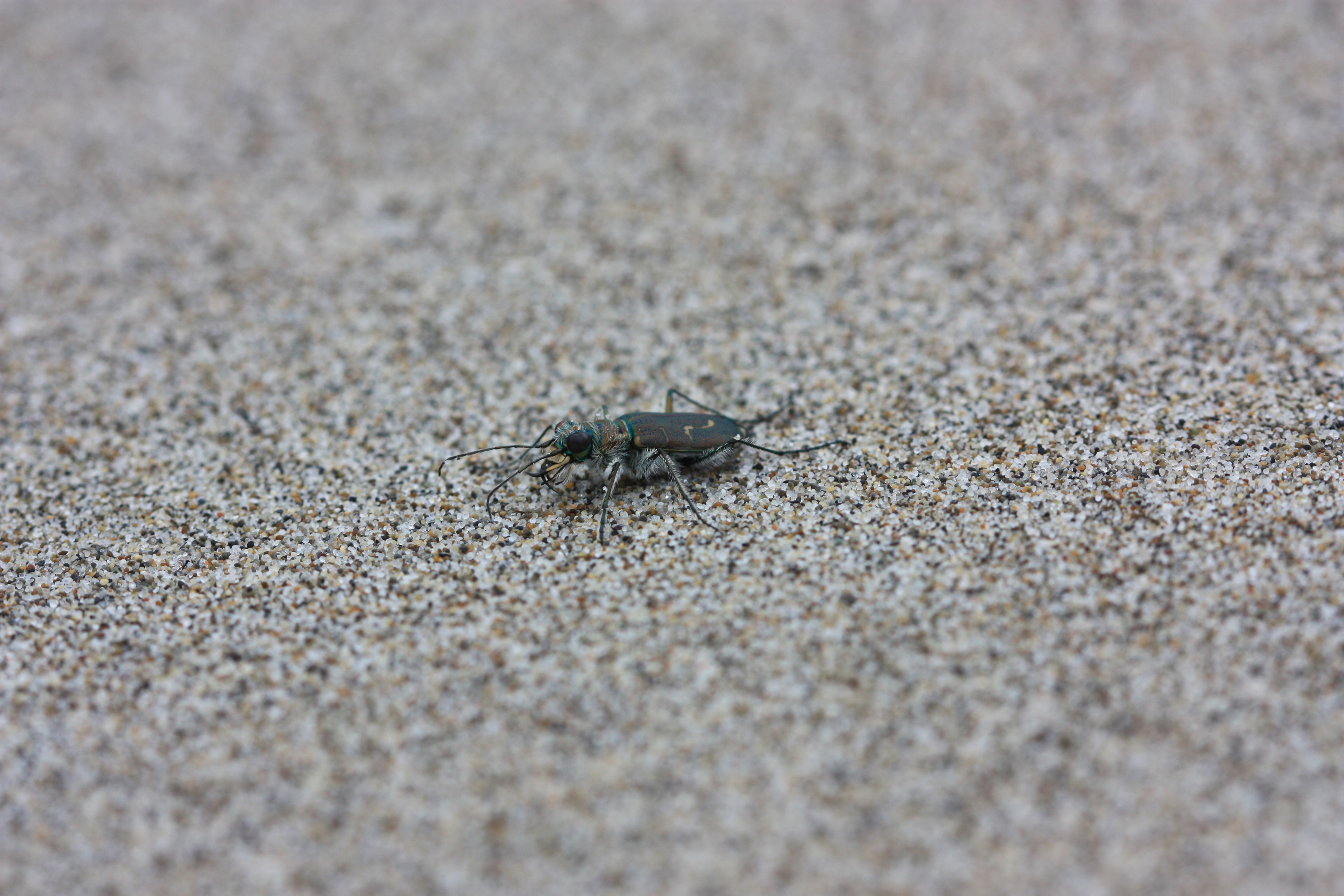Media Contacts
Sarina Jepsen, Endangered Species Program Director, Xerces Society for Invertebrate Conservation
(971) 244-3727 | [email protected]
Quinn Read, Oregon Policy Director, Center for Biological Diversity
(206) 979-3074 | [email protected]
Rare Beetle Threatened by Habitat Loss, ORVs, Sea-Level Rise
PORTLAND, Ore.; Wednesday, September 29, 2021---In response to a petition filed by the Center for Biological Diversity and the Xerces Society for Invertebrate Conservation, the U.S. Fish and Wildlife Service announced today that the imperiled Siuslaw hairy-necked tiger beetle may qualify for protection under the Endangered Species Act.
The tiger beetles once lived on coastal beaches from Northern California to Washington but have been lost from most of those places. The most recent surveys found them at only 17 sites in Oregon; in Washington, they’re only known to survive at three sites. At nearly all sites, fewer than 50 individuals were located.
The species is severely threatened by habitat loss and destruction caused by off-road vehicles (ORVs), climate change, coastal erosion and trampling by beachgoers. It’s also at risk from inbreeding and invasive species. Endangered Species Act protection will ensure that the federal and state agencies that manage the beetle’s remaining populations protect it from these threats.
“As unspoiled stretches of the Oregon coast vanish to development and the impacts of climate change, we risk losing unique species like the tiger beetle,” said Quinn Read, Oregon policy director at the Center for Biological Diversity. “I’m hoping Endangered Species Act protection can give these beautiful insects and their habitat a fighting chance of survival.”
Seven of 17 remaining beetle sites in Oregon are concentrated along a 10.5-mile stretch of the New River Area of Critical Environmental Concern, one of the last remaining wild places along the Oregon coast. Other Oregon sites occur on the Siuslaw National Forest in the Oregon Dunes National Recreation Area, one of the most popular areas for ORV use in the world, as well as state parks in Oregon and Washington.
“The Siuslaw hairy-necked tiger beetle is now one step closer to protection,” said Sarina Jepsen, endangered species director at the Xerces Society. “This extraordinary beetle only lives at freshwater outflows into the Pacific Ocean that remain largely untouched. Because it spends part of its life burrowed in the sand, it’s particularly vulnerable to trampling, ORV use and other earth-moving activities.”
Named after the Siuslaw people, who trace their ancestry back to the aboriginal inhabitants of the South-Central coast of Oregon, the Siuslaw hairy-necked tiger beetle hunts its prey in coastal areas where fresh water meets ocean beaches.
The tiger beetle is a fierce predator as both an adult and a larva. Adults are fast and mobile hunters who run across the sand in short bursts or short, hopping flights to chase prey. They run so fast that they need to stop after each burst to visually relocate their prey before continuing the pursuit. Their larvae are “sit and wait” hunters who keep their heads flush with the sand surface and, when prey walks by, reach up to half their body length out of their burrows and grab the prey with their jaws, then drag it to the bottom of the burrow to consume it.
###
Read the Federal Register announcement at https://www.federalregister.gov/documents/2021/09/29/2021-20963/endangered-and-threatened-wildlife-and-plants-90-day-findings-for-five-species
Petition filed by Xerces Society and Center for Biological Diversity, https://xerces.org/publications/petitions-comments/endangered-species-act-petition-for-siuslaw-hairy-necked-tiger
VIDEO: Oregon Field Guide segment about Xerces work to protect the Siuslaw hairy-necked tiger beetle, https://watch.opb.org/video/oregon-field-guide-siuslaw-hairy-necked-beetle/
Profile of the Siuslaw hairy-neck tiger beetle, https://xerces.org/endangered-species/species-profiles/at-risk-beetles/siuslaw-hairy-necked-tiger-beetle
The following photograph of the Siuslaw hairy-necked tiger beetle (Cicindela hirticollis siuslawensis) is released for media use. (Right click to download and save.)
Photo credit: Xerces Society / Sarina Jepsen.

ABOUT THE XERCES SOCIETY FOR INVERTEBRATE CONSERVATION
The Xerces Society for Invertebrate Conservation protects the natural world by conserving invertebrates and their habitat. Established in 1971, the Society is a trusted source for science-based information and advice and plays a leading role in protecting pollinators and many other invertebrates. Our team draws together experts from the fields of habitat restoration, entomology, plant ecology, education, community engagement, pesticides, farming and conservation biology with a single passion: Protecting the life that sustains us. To learn more, visit xerces.org or follow us @xercessociety on Twitter, Facebook or Instagram.
ABOUT THE CENTER FOR BIOLOGICAL DIVERSITY
The Center for Biological Diversity is a national, nonprofit conservation organization with more than 1.7 million members and online activists dedicated to the protection of endangered species and wild places.
